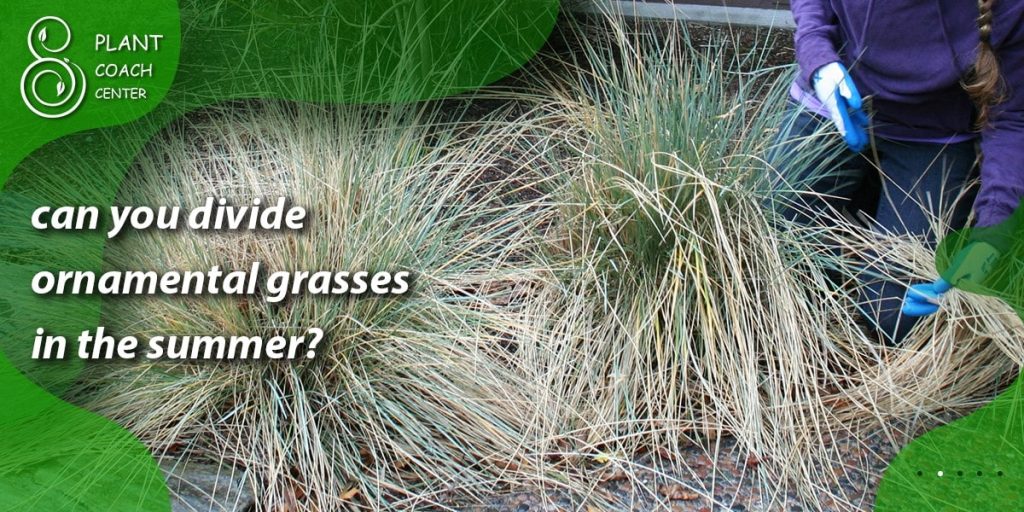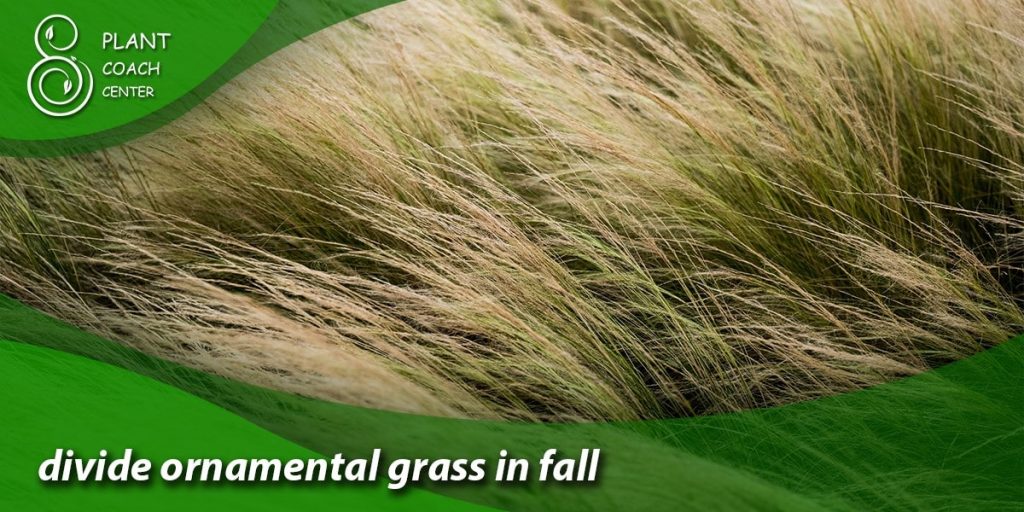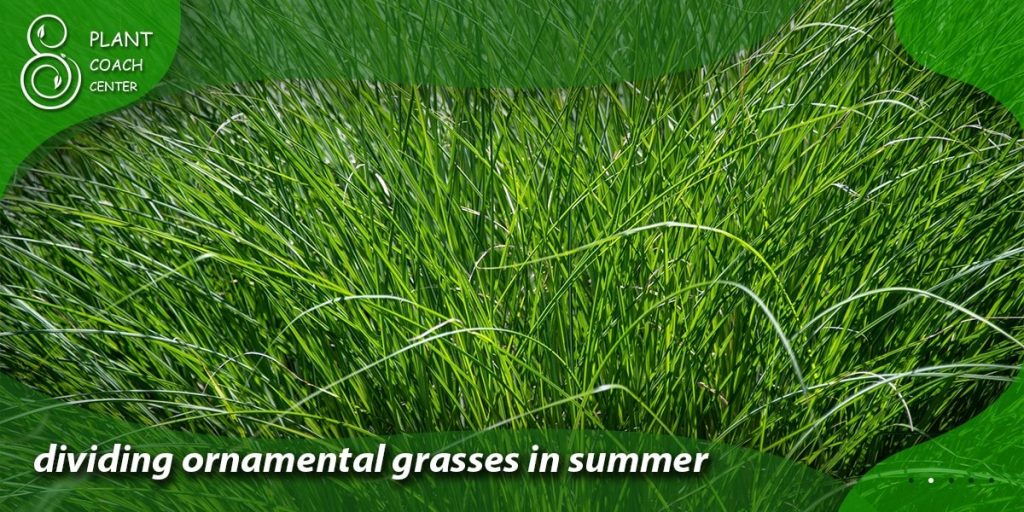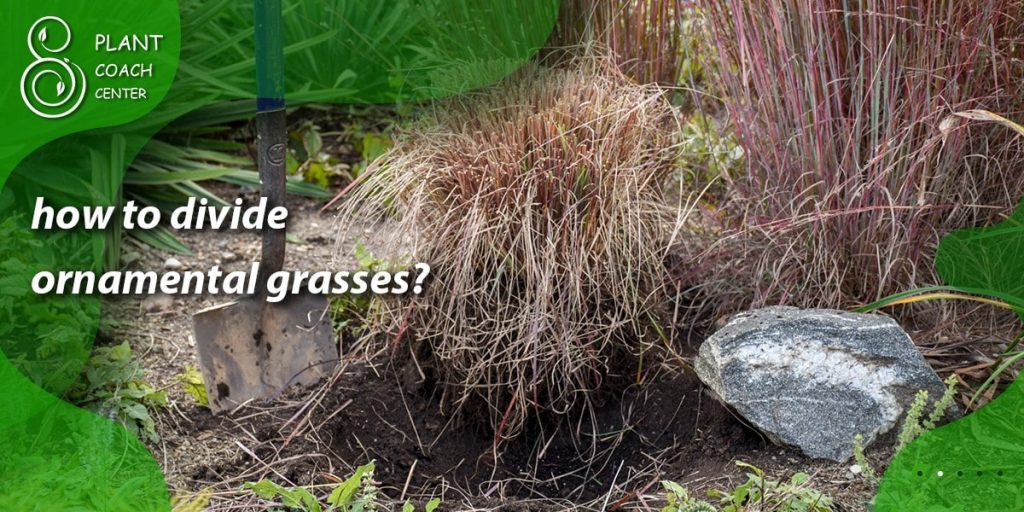When to Divide Ornamental Grasses?
Welcome to the lush world of ornamental grasses, where the gentle sway of feathery plumes and the rustling symphony of slender blades add a touch of elegance to any landscape. These botanical beauties lend a mesmerizing aesthetic and offer the unique opportunity to multiply their splendor through division.
The art of dividing ornamental grasses is a horticultural dance, a choreography between nature’s rhythms and the gardener’s hand. As you embark on this green-fingered journey, you’ll learn to decipher the subtle cues Mother Nature provides, unveiling the perfect moments to rejuvenate and propagate.
Join us as we unravel the secrets behind timing, techniques, and triumphs in ornamental grass division, ensuring that your garden remains a vibrant tapestry of textures and colors throughout the seasons. Whether you’re a seasoned horticulturist or just beginning to explore the wonders of gardening, this guide will equip you with the knowledge to orchestrate the graceful spectacle of dividing ornamental grasses with confidence and finesse.

Seasonal Symphony: Timing the Division
Dividing ornamental grasses is an art that harmonizes with the seasons, orchestrating a symphony of growth and renewal. Each season offers its own cues and considerations, guiding gardeners on the best time to execute this transformative act.
Spring Awakening
As winter’s chill retreats and the first whispers of warmth grace the air, ornamental grasses begin to stir. Early spring is a prime window for division, just as new shoots emerge. By dividing in early spring, you provide the freshly divided segments ample time to establish themselves before the scorching heat of summer arrives. This timing aligns well with cool-season grasses, like Feather Reed Grass (Calamagrostis), which displays its most significant growth during the cooler months.
Summer Slumber
While spring division takes center stage, summer has its own cameo in the orchestration. Towards the end of summer, as the flowering spectacle tapers off, certain warm-season grasses, such as Maiden Grass (Miscanthus), can be divided. However, be mindful of high temperatures and water stress during this period, as they can impact the success of transplants. Summer division offers an advantage for those seeking a quicker turnaround for rejuvenating their grassy companions.
Autumn Elegy
Fall marks a graceful transition for ornamental grasses. As the growing season winds down, the energy of the plant shifts from top growth to root development. Dividing in early autumn, around late August to early September, provides ample time for the transplants to establish robust root systems before winter’s arrival. This timing suits a wide range of grasses, including cool-season and warm-season varieties, making it a versatile choice for division.
Winter Reverie
While it might seem counterintuitive, the dormancy of winter can also serve as a strategic period for division. In regions with milder winters, late winter (January to February) can be a suitable time, especially for evergreen grasses. The reduced demand for water and nutrients during dormancy can lessen transplant stress. However, ensure you choose a day when the ground isn’t frozen and is workable.
Signs of Readiness: Gauging the Grasses
Dividing ornamental grasses isn’t just picking a season—it’s about reading the plants’ language. These green companions provide subtle yet telling signs that they’re primed for division, allowing you to make the most of this rejuvenating process.
Overcrowding Clues
One of the most obvious signs that your ornamental grasses are ready for division is when they become overcrowded. The center becomes dense and less productive as the clumps grow and expand over the years. Reduced flowering and browning at the center are telltale signs that the plant needs breathing space. Dividing at this stage prevents competition for resources, ensuring healthier growth.
Growth Patterns
Watch the growth patterns of your ornamental grasses closely. If you notice that the center of the clump is growing slower than the outer edges, it’s an indication that division is due. The active growth at the periphery signifies that the plant is trying to expand but is constrained by its density. Dividing the clump redistributes energy and encourages uniform growth.
Vitality and Vigor
Healthy ornamental grasses display vitality in their appearance. If you observe a decrease in vigor—such as smaller plumes, faded colors, or overall diminished health—it might be a sign that the plant has exhausted its available resources within its confined space. Division injects new life into the segments, revitalizing their energy and encouraging robust growth.
Timing the Telltale Flowers
The flowering cycle can also guide division readiness. If your grasses bloom less abundantly than usual or the flowers are smaller, it could indicate overcrowding. Timing your division just after flowering allows the newly divided plants to recover without interrupting their bloom cycle too much.
Easy Separation
When the time is right, ornamental grasses will be willing to be divided. You’ll notice that the clump’s outer edges have a looser structure, with individual shoots and roots more accessible for separation. Trying to divide grasses when they’re too young or too old can result in stress for both the plant and the gardener, so observing this ease of separation is a positive sign.
Patience Pays
While rushing into division at the first sign of readiness is tempting, patience can lead to more successful outcomes. Carefully assess multiple signs and ensure that the plant is in an active growth phase before making your move. Remember, listening to your ornamental grasses’ signals ensures that your division efforts are met with enthusiastic growth and a flourishing landscape.

Getting Your Hands Dirty: Step-by-Step Division Guide
Dividing ornamental grasses is a hands-on endeavor that connects you with the rhythm of nature and the vitality of your garden. While the process might seem intricate, breaking it down into clear steps can make it an enjoyable and rewarding experience. Here’s a step-by-step guide to help you navigate the division journey:
Step 1: Timing Is Everything
Before you grab your tools, ensure you’ve chosen the right time for division based on the species and season. The cues you’ve gathered from the plant’s readiness will dictate the perfect moment to proceed.
Step 2: Gather Your Tools
Equip yourself with the necessary tools—a sharp spade, garden fork, pruners, and gloves. Clean and sharp tools make the division process smoother and minimize stress on the plant.
Step 3: Prep the New Homes
Prepare the new planting holes before you start dividing. Ensure the soil is well-draining and enriched with compost. Proper preparation ensures a seamless transition for the divided segments.
Step 4: Lift and Loosen
Carefully lift the entire clump using a spade or garden fork. Gently loosen the soil around the roots to make the separation process more accessible. If the clump is large, consider dividing the garden fork into manageable sections.
Step 5: Segmenting with Care
Divide the clump into segments, ensuring each section has healthy shoots and a good portion of roots. Avoid tearing or damaging the roots as you separate the segments.
Step 6: Trim and Tidy
Inspect the roots and shoots of each segment and trim any damaged or overly long parts. This step encourages balanced growth and prevents unnecessary stress on the newly divided plants.
Step 7: Replant with Precision
Place each segment into its prepared hole, ensuring the crown (where the shoots meet the roots) is at the soil surface. Fill in the hole with soil, patting gently to eliminate air pockets. Water thoroughly to help the soil settle.
Step 8: Post-Division Care
After transplanting, ensure your newly divided grasses receive adequate water and shade for the first few weeks to minimize transplant shock. Gradually reintroduce them to full sun to prevent stress.
Step 9: Monitor and Nurture
Keep a watchful eye on the divided grasses in the weeks following the division. Regular watering, mulching, and light feeding will support their establishment and growth.
Step 10: Celebrate Growth
As your divided ornamental grasses settle into their new homes and grow, celebrate your division venture’s success. Witnessing the flourishing outcome of your efforts is a gratifying experience that adds a new dimension of beauty to your garden.

Species Spotlight: Division Techniques for Various Grass Types
Just as a conductor tailors their approach to different musical compositions, gardeners must adapt their division techniques to the unique characteristics of each ornamental grass species. Here, we shed light on the distinct demands of various grass types and the techniques that suit them best:
Feather Reed Grass (Calamagrostis spp.) – Clump Division
Feather Reed Grass forms dense clumps that benefit from clump division. In early spring, as new growth emerges, lift the clump and use a sharp spade to divide it into sections. Aim to include both shoots and roots in each division. Replant the segments in well-prepared holes, ensuring they have enough space to spread and grow.
Maiden Grass (Miscanthus spp.) – Rhizome Division
Maiden Grass spreads via rhizomes, making rhizome division an effective technique. As the new growth becomes visible in late spring or early summer, dig up the clump and carefully separate the rhizomes. Trim away dead or damaged sections and replant the healthy rhizomes in their new locations.
Fountain Grass (Pennisetum spp.) – Division by Offsets
Fountain Grass produces offsets—small, connected plants around the central clump. During early spring, gently dig up the clump and detach the offsets by carefully teasing them away from the parent plant. Plant the offsets in their new spots, ensuring they have enough room to grow.
Switch Grass (Panicum spp.) – Late Spring Division
Switch Grass benefits from division in late spring, just as new shoots emerge. Lift the clump and use a garden fork to divide it into sections. Ensure each division has a good balance of roots and shoots. Replant the divisions at the same depth they were originally growing.
Japanese Forest Grass (Hakonechloa spp.) – Division by Clump or Slicing
Japanese Forest Grass can be divided by gently breaking the clump into smaller sections. Alternatively, you can slice through the clump with a sharp knife to create segments for replanting. Early spring or early autumn is a suitable time for division.
Blue Oat Grass (Helictotrichon sempervirens) – Spring Division
Blue Oat Grass benefits from division in early spring. Lift the clump and divide it into manageable sections using a sharp spade. Trim the outer parts to encourage healthy growth in the newly divided segments. Replant in well-prepared soil.
Carex (Sedge) Species – Spring Division or Transplanting Offsets
Carex species, or sedges, can be divided in early spring. Gently lift and separate the clump into sections, ensuring each division has shoots and roots. Some Carex species also produce offsets that can be carefully detached and transplanted in spring.

Transplant Triumphs: Ensuring Smooth Replanting
Divining ornamental grasses is a transformative act; the process doesn’t end with the separation itself. Transplanting the divided segments carefully is crucial to their successful establishment and continued growth. Let’s explore the key strategies to ensure your transplants thrive in their new homes:
Prepare the Soil
Before replanting, ensure the soil in the new location is well-prepared. Amend it with compost to improve drainage and provide essential nutrients. Healthy soil sets the stage for strong root development and overall plant vitality.
Dig Appropriate Holes
The holes for your divided segments should be spacious enough to accommodate the roots without crowding or bending them. Ensure the depth of the hole matches the depth at which the plant was originally growing.
Watering Routine
Thoroughly water the holes before placing the divided segments. After planting, water again to settle the soil and eliminate air pockets. Keep a consistent watering schedule for the first few weeks to aid in root establishment.
Mulching Matters
Apply a layer of organic mulch around the base of the transplants. Mulch helps retain moisture, suppresses weed growth, and insulates the soil from temperature fluctuations.
Shade Consideration
Newly transplanted grasses are sensitive to direct sunlight and heat. Provide temporary shade using fabric or shade cloth to shield them from intense sun during the initial days after transplanting.
Gradual Sun Exposure
After the first week, gradually expose the transplants to increasing sunlight. This process, known as “hardening off,” helps the plants adjust to their new environment without experiencing shock.
Limit Fertilization
While you might be tempted to fertilize immediately after transplanting, it’s best to hold off for a few weeks. Fertilizing too soon can stress the plant. Allow the roots to be established before introducing fertilizers.
Watch for Stress Signs
Keep a close eye on the transplants for any signs of stress, such as wilting, yellowing leaves, or slow growth. Timely action, such as adjusting watering or providing extra shade, can prevent stress from escalating.
Patience Is Key
Transplants need time to acclimate to their new surroundings. It’s normal for them to experience a brief period of adjustment. Be patient and resist the urge to make abrupt changes.
Long-Term Care
Once the transplants are established, continue to care for them with regular watering, occasional feeding, and monitoring for pests or diseases. Remember that well-cared-for transplants are more likely to flourish and contribute to the overall beauty of your garden.

Conclusion
In the enchanting realm of ornamental grasses, the art of division unfolds as a dance between seasons, signs, and techniques. As you master the symphony of timing, learn to interpret the subtle language of readiness, and execute the step-by-step choreography of division, your garden becomes a canvas for nature’s elegance.
By embracing the diversity of grass species and avoiding common pitfalls, your landscape blossoms into a tapestry of textures and hues woven by your careful hands. Remember, whether you’re a seasoned horticulturist or a budding green enthusiast, the resources and expertise at PlantCouchCenter.com await your journey toward thriving ornamental grasses, a true testament to the gardener’s artistry and nature’s magnificence.
When should I divide my ornamental grasses?
Divide in early spring or late summer for optimal growth.
How do I know if my grasses are ready for division?
Look for overcrowding, slowed growth, and vitality decline.
What mistakes should I avoid during division?
Avoid improper timing, root damage, and incorrect division techniques.







